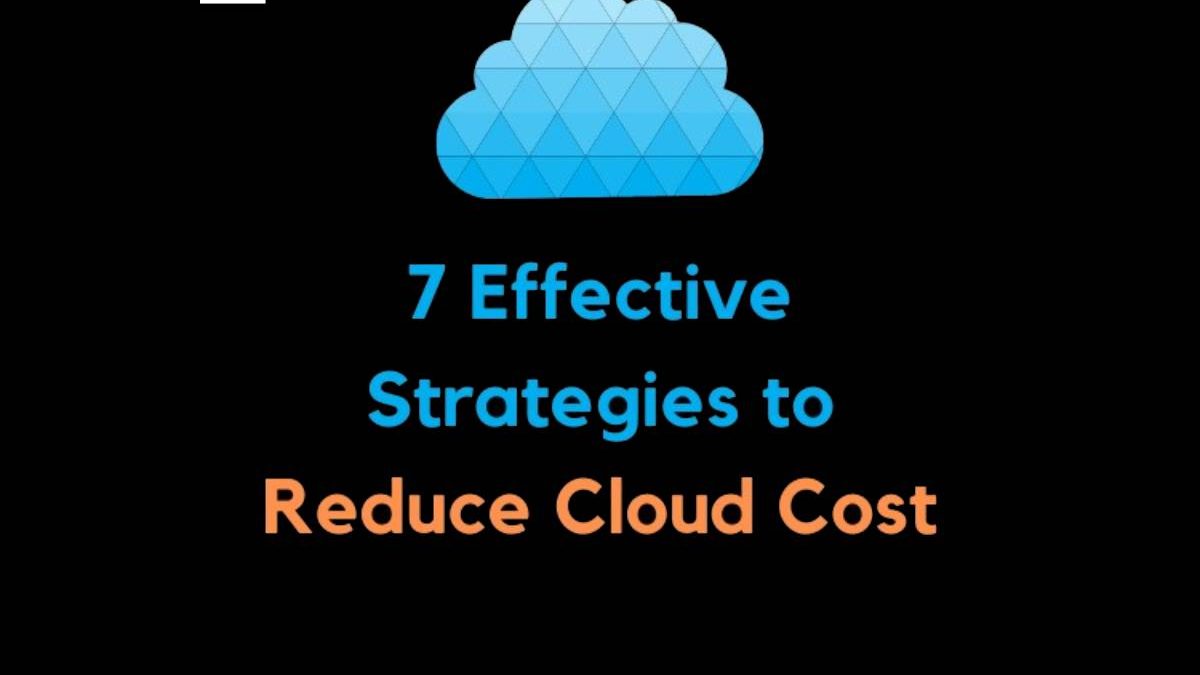Cloud computing offers various on-demand infrastructure management services for all types of businesses. Cloud services provide a great deal of elasticity, scalability, and reachability, but they come at a cost. Therefore, cloud cost management is an important aspect for the cloud engineering team to maintain financial efficiency. Cloud cost control efforts need collective action from technical and functional management. Nevertheless, we have attempted to include some of the proven cloud cost control best practices to immediately control cloud monthly expenses.
Table of Contents
1. Monitor Service Utilization and Cost Threshold Notifications:
Cloud monitoring services and monitoring tools can play a larger role in sharing detailed insights into cloud service usage via custom API calls, monitoring agents, multiple-view dashboards, and metrics. You can also set up cost notifications to review usage when resources exceed predefined thresholds to prevent unexpected spikes and adjust your cloud expenditure strategy. Such critical notifications can also be integrated with Slack, mobile, WhatsApp, and many other endpoints for immediate remediation. Additionally, it is also advised to set up daily service-wise cost notifications to review cost trends so that offenders can be identified and appropriate fixes can be applied instantaneously.
2. Use compute services wisely:
A cloud service provider offers various instance flavors under compute services. Each instance type will have an exclusive configuration and flexible billing terms, such as on-demand instances, reserved instances, and spot instances. It is always advised to analyze your workload to choose the most suitable instance flavors for each application. Such as: leverage reserved Instances that offer stable workloads can give you significant cost savings. In the same way spot instances can be used for non-critical fault-tolerant workloads, they can also provide substantial savings. These instances come at a lower cost but can be terminated if the spot price exceeds your bid. You can use them for tasks that can be interrupted at any time. Such an EMR cluster worker node can be the most suitable business case. You can always analyze your usage patterns and opt for the right instance flavors for a consistent, predictable compute service cost.
3. Implement Cost Tags and Allocation:
Tags Manager will permit you to categorize cloud resources by project, department, environment, service, and application name. After associating specific tags to each resource, you can gain granular-level visibility into cloud costs across different segments, patch operating systems using tags, and apply certain scripts to tags for mass deployment. This will help you infuse automation to manage daily cloud operations, manage cloud services more effectively, allocate costs more accurately, identify areas for optimization, and enforce budget controls effectively.
4). Infrastructure Consolidation and Re-architecture:
Cloud infrastructure provisioning decisions have to be made with business justification and stockholder approval because over provisioning resources can lead to unnecessary expenses. As an experienced cloud engineer, you need to ensure instance usage and adjust instance sizes to match actual needs. You can also use ELB (load balancing) and auto-scaling services to dynamically allocate resources based on real-time demand. Infrastructure consolidation is the key to deploying multiple application services on a single instance and adjusting resources based on actual usage patterns. You can use monitoring tools that graph historic data to identify underutilized instances, resize or shut them down accordingly, and shutdown UAT or Dev instances at night if they are not being used. You can consistently monitor the CPU, memory, and network to ensure optimal utilization and cost efficiency.
5. Onboard Serverless architectures:
Serverless computing allows you to focus on code functionality without managing the underlying infrastructure. This model automatically scales up based on demand while maintaining resources. Serverless architectures can lead to substantial cost savings.
6. Optimize Storage Costs and Clean Up Unused Resources:
Regularly auditing your cloud environment to identify and eliminate unused resources such as unused instances, images, AMI backups, IP, storage volumes, and snapshots can contribute to unnecessary costs over time. You need to carefully check storage usage by archiving infrequently accessed data and using tiered storage options. You can leverage object lifecycle policies to automatically transition data to lower-cost storage classes with archival as it becomes less frequently accessed. And also You need to choose the right storage class for your data based on access patterns and also calculate the data transfer rate before sending data to a specific class because data transfer and retrieval rates may vary.
7. Data Transfer Costs:
Data transfer between different regions and cloud services can contribute significantly to your cloud costs. You can reduce these costs by selecting the appropriate region based on your users’ location, thereby reducing cross-region data transfers. You can also use content delivery networks (CDNs) to cache and distribute content, decreasing the need for data transfers and improving performance. Keep a close eye on security as well, because some security loopholes may lead to data leakage, which adds a huge amount to cloud costs.
Conclusion:
Managing cloud costs requires proactive monitoring, consistent resource optimization efforts, and strategic decision-making. You may need to implement robust monitoring policies and cloud tags on resources, choose cost-effective storage, optimize data transfer, consider serverless architectures, and have a robust governance team to review infrastructure provisioning. The above seven strategies can help you reduce cloud costs significantly while maintaining the performance and scalability benefits of cloud computing.
Author Information
This article is written by Amit Kumar, Head of Engineering at M/s Checkmate Global Technologies. You can connect with us to hire a cloud engineer in India to manage the entire cloud engineering stack.

